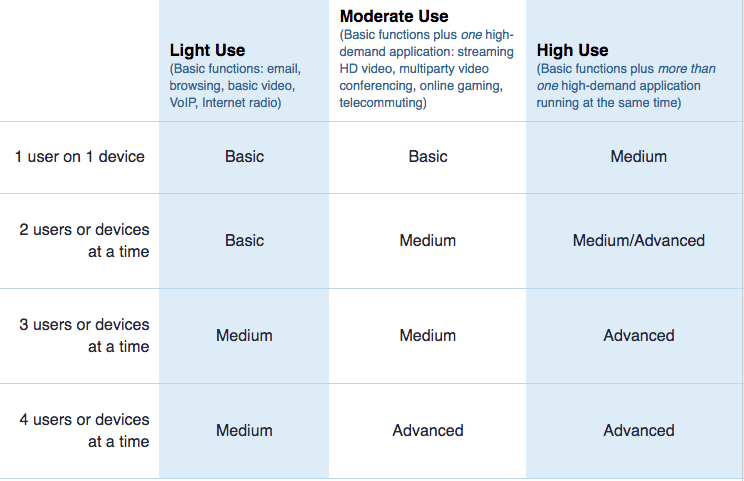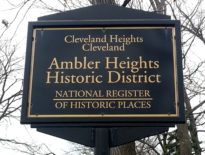The definition of “broadband” has changed over the years to reflect the way we use the Internet. From a mere 200 kilobits per second (Kbps) in download speed in 1996 to 25 megabits per second (Mbps) in 2015, it’s also important to remember that download speed is only part of the definition. While lobbyists for big ISPs argue the 25/3 standard is too high, 25 Mbps (download) and 3 Mbps (upload) is a reasonable minimum standard for broadband in 2018.
#1 /Turn off that video! I need to make a phone call!/
Back in the day, we used to accept that accessing the Internet meant we couldn’t make phone calls. Technology has advanced, and now that seems ridiculous. In 2018, general household Internet use requires at least a 25 Mbps download capacity so that we can all use the Internet without disrupting each other.
Here’s the Federal Communications Commission’s (FCC) handy chart:

Basic Use = 3 – 8 Mbps
Medium Use = 12 – 25 Mbps
Advanced Use = More than 25 Mbps
Pew Research found in 2017 that a regular U.S. household has 5 devices and that 18 percent of households actually have 10+ devices. Too many people get caught up in how much capacity a single device needs, but our households have many devices that are each vying for access. The question is whether a connection can handle the peak demand, not average.
#2 Creators, Not Just Consumers
Sure, Internet access is great for watching cat videos, but it’s also great for sharing information, which may require a high-capacity upload speed. If a subscriber wants to add videos to YouTube, participate in a job interview over Skype, or upload soil information for precision farming, they’ll need a decent upload speed.
For an HD Video Call, Skype recommends an upload speed of at least 1.5 Mbps. The livestream camera company Mevo recommends a minimum upload speed of 5 – 10 Mbps for its products. For Voice Over IP (VOIP) telephone service, subscribers should have an upload speed of 3 Mbps. Farmers are uploading information on their soil and crops for analysis. Since 2012, many farmers in the midwest have used GPS soil sampling to improve crop yields. Precision agriculture continues to grow as an industry.
In 2014, many people and organizations recommended 3 Mbps be the standard to the FCC, and that’s what they adopted in their 2015 Broadband Progress Report. Check out pages 19-34 for an in-depth discussion on the broadband standard.
We want to stress that we believe 25/3 is a reasonable minimum broadband definition. We believe there are many benefits to higher capacity connections and that communities absolutely need to do more than the minimum.
#3 Canada’s Aiming Higher
At some point, probably with the next administration’s Federal Communications Commission, the U.S. will again raise the minimum speed for broadband to be consistent with technologies at the time. The FCC changed the definition in 2010 to 4 Mbps and again in 2015 to our current standard. For more details, the BroadbandNow Team explores the history of the term and explains why the definition must continue to change.
The U.S. can’t firmly agree on 25 Mbps/3 Mbps: Many FCC subsidy programs only require ISPs to offer speeds of 10 Mbps (download) and 1 Mbps (upload). As of 2018, the federal government was still subsidizing new networks that can’t support broadband.
Meanwhile, Canada is moving ahead. The Canadian government has announced a goal of 50 Mbps/10 Mbps. Only 2 million Canadian people do not have access to that speed. A broadband standard of 25 Mbps/3 Mbps isn’t that ambitious and is a good minimum for current usage.
TLDR;
U.S. households use many Internet-connected devices simultaneously, so they need high-speed downloads. People are creators, and they need to be able to upload videos and other content at a reliable rate. Look: Canada has higher standards than we do.
Image credit Slon Pics, via pixaby.
This article was originally published on ILSR’s MuniNetworks.org. Read the original here.





